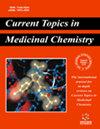红景天属植物的抗氧化作用:植物化学和药理机制。
IF 3.3
4区 医学
Q3 CHEMISTRY, MEDICINAL
引用次数: 17
摘要
红景天作为一种传统药物,由于其强大的抗氧化性能,已被用于临床治疗。植物化学分析显示存在类黄酮、苯丙素、苯乙醇/苄醇衍生物、发蓝糖苷和萜类化合物。生物活性化合物已被证明在清除活性氧(ROS)方面是有效的。该结构含有酚羟基和不饱和键。本文综述了红景天提取物和活性成分的抗氧化能力。红景天苷作为主要的药理成分,在科学研究和临床实践中得到了严格的研究和应用。已有证据表明,红景天提取物或红景天苷能够逆转ROS诱导的DNA损伤,改变细胞因子和抗氧化酶的表达。在过去的二十年里,人们一直在研究这种草药抗氧化作用的潜在机制。我们总结了该草药在心血管、呼吸和神经系统的几种慢性疾病中的可能作用和作用途径,以及潜在的表观遗传学影响。实验和临床研究产生的信息为进一步研究红景天植物的药用潜力提供了宝贵的见解。本文章由计算机程序翻译,如有差异,请以英文原文为准。
Antioxidative Effects of Rhodiola Genus: Phytochemistry and Pharmacological Mechanisms against the Diseases.
Rhodiola as one of traditional medicines has been used for clinical treatments due to its strong antioxidant properties. Phytochemical analysis revealed the presence of flavonoids, phenylpropanoids, phenylethanol/benzyl alcohol derivatives, cyanogenic glycosides and terpenoids. The bioactive compounds had been demonstrated to be effective at scavenging reactive oxygen species (ROS). The structures contain phenolic hydroxyl groups and unsaturated bonds. This article reviews antioxidant capacities of the extracts and bioactive components derived from Rhodiola plants. As the major pharmacological ingredient, salidroside is rigorously investigated and used in scientific researches and clinical practices. Accumulated evidences indicated that extracts of Rhodiola plants or salidroside could be able to reverse DNA damage and alter expression of cytokines and antioxidative enzymes induced by ROS. The underlying mechanisms for the antioxidative effects of the herb have been investigated in the last two decades. We summarize the possible effects and acting pathways for the herb involved in several chronic diseases in cardiovascular, respiratory, and nervous systems, as well as potential epigenetic influences. The information generated from experimental and clinical studies offered valuable insights for further investigations of medical potentials of Rhodiola plants.
求助全文
通过发布文献求助,成功后即可免费获取论文全文。
去求助
来源期刊
CiteScore
6.40
自引率
2.90%
发文量
186
审稿时长
3-8 weeks
期刊介绍:
Current Topics in Medicinal Chemistry is a forum for the review of areas of keen and topical interest to medicinal chemists and others in the allied disciplines. Each issue is solely devoted to a specific topic, containing six to nine reviews, which provide the reader a comprehensive survey of that area. A Guest Editor who is an expert in the topic under review, will assemble each issue. The scope of Current Topics in Medicinal Chemistry will cover all areas of medicinal chemistry, including current developments in rational drug design, synthetic chemistry, bioorganic chemistry, high-throughput screening, combinatorial chemistry, compound diversity measurements, drug absorption, drug distribution, metabolism, new and emerging drug targets, natural products, pharmacogenomics, and structure-activity relationships. Medicinal chemistry is a rapidly maturing discipline. The study of how structure and function are related is absolutely essential to understanding the molecular basis of life. Current Topics in Medicinal Chemistry aims to contribute to the growth of scientific knowledge and insight, and facilitate the discovery and development of new therapeutic agents to treat debilitating human disorders. The journal is essential for every medicinal chemist who wishes to be kept informed and up-to-date with the latest and most important advances.

 求助内容:
求助内容: 应助结果提醒方式:
应助结果提醒方式:


